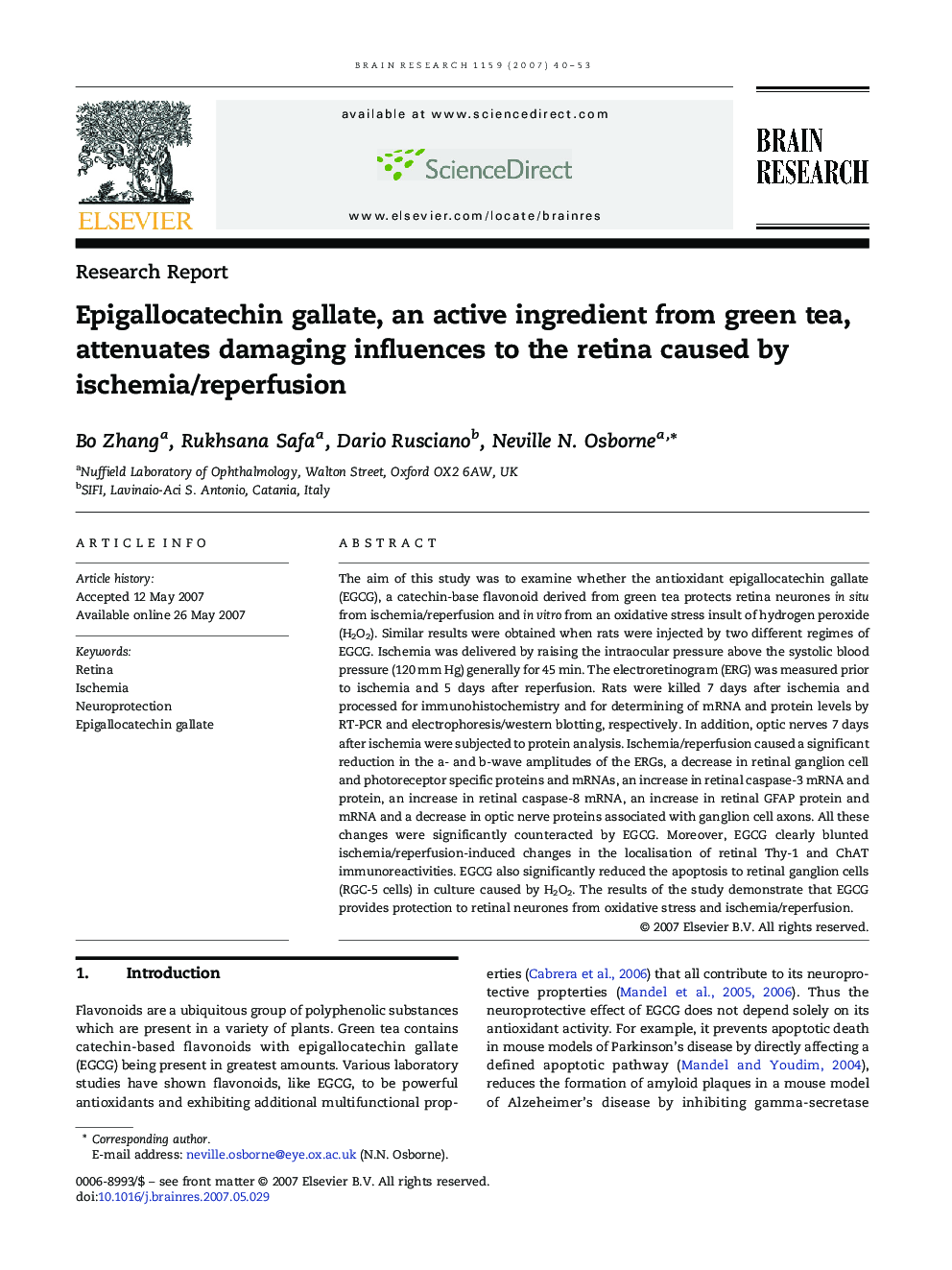| Article ID | Journal | Published Year | Pages | File Type |
|---|---|---|---|---|
| 4330895 | Brain Research | 2007 | 14 Pages |
Abstract
The aim of this study was to examine whether the antioxidant epigallocatechin gallate (EGCG), a catechin-base flavonoid derived from green tea protects retina neurones in situ from ischemia/reperfusion and in vitro from an oxidative stress insult of hydrogen peroxide (H2O2). Similar results were obtained when rats were injected by two different regimes of EGCG. Ischemia was delivered by raising the intraocular pressure above the systolic blood pressure (120Â mm Hg) generally for 45Â min. The electroretinogram (ERG) was measured prior to ischemia and 5Â days after reperfusion. Rats were killed 7Â days after ischemia and processed for immunohistochemistry and for determining of mRNA and protein levels by RT-PCR and electrophoresis/western blotting, respectively. In addition, optic nerves 7Â days after ischemia were subjected to protein analysis. Ischemia/reperfusion caused a significant reduction in the a- and b-wave amplitudes of the ERGs, a decrease in retinal ganglion cell and photoreceptor specific proteins and mRNAs, an increase in retinal caspase-3 mRNA and protein, an increase in retinal caspase-8 mRNA, an increase in retinal GFAP protein and mRNA and a decrease in optic nerve proteins associated with ganglion cell axons. All these changes were significantly counteracted by EGCG. Moreover, EGCG clearly blunted ischemia/reperfusion-induced changes in the localisation of retinal Thy-1 and ChAT immunoreactivities. EGCG also significantly reduced the apoptosis to retinal ganglion cells (RGC-5 cells) in culture caused by H2O2. The results of the study demonstrate that EGCG provides protection to retinal neurones from oxidative stress and ischemia/reperfusion.
Related Topics
Life Sciences
Neuroscience
Neuroscience (General)
Authors
Bo Zhang, Rukhsana Safa, Dario Rusciano, Neville N. Osborne,
